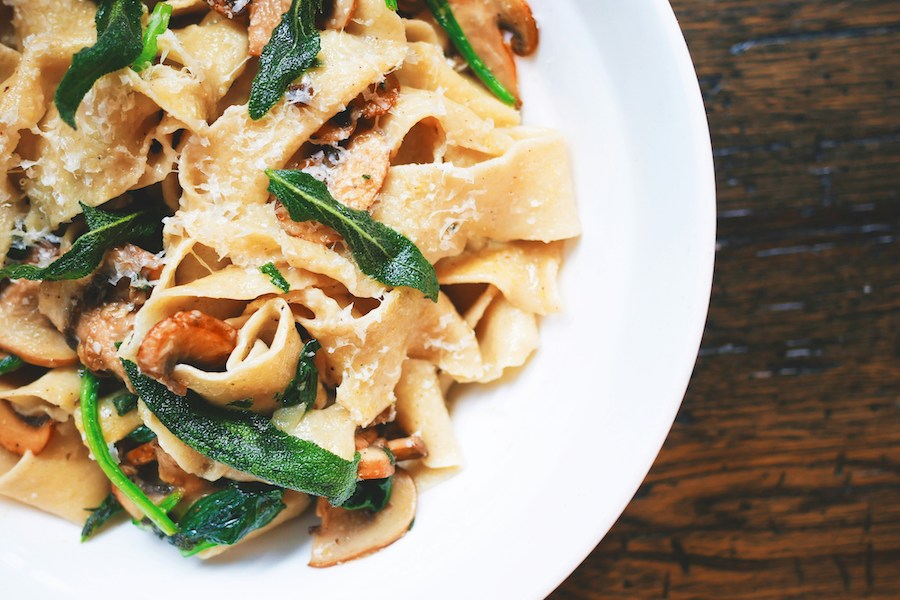Does anyone remember Jan’s evaluation of Michael from The Office? “I’ve run out of carrots. I’ve run out of sticks. Michael has one again proven himself to be an unmanageable employee.” After years of trying to feed my picky eater, I started thinking about that line a lot. I was out of carrots and sticks; getting him to eat had started to feel unmanageable.
And the pandemic that shut down his school and forced us to spend every single meal together? That didn’t help either.
I’d read the books, tried everything Kids Eat in Color recommended on Instagram, cut the vegetables into stars and hearts. I’d also, in my desperation, done all the things you’re not supposed to do: bribery and pressure. All to no avail.
So a few months ago, I finally signed my four-year-old up for food therapy with an occupational therapist for his intense picky eating. And since I know that many parents deal with this issue, I thought I’d share more of my experience.
Here’s how it went.

Karolina Kołodziejczak via Unsplash
Related: 8 school lunch hacks for picky eaters
Food therapy for picky eating: Is it right for your kid?
Let me start by saying that only a trained occupational therapist can officially make this call. Your therapist will have you complete a full assessment with all the foods your kid will and won’t eat. It turned out that my son wouldn’t eat anything from several whole categories of food, which is why she thought he’d be a good candidate for therapy.
So, for example, if your child isn’t eating anything from the veggie category, or anything in the crunchy texture category, then he might need some professional help. Another sign they might need help is just the level of stress your kid shows when a new food is presented. Can they tolerate it on their plate? Do they scream or throw it on the floor? This rigidity around novel foods could also be an indicator.
Another factor is, of course, parental stress levels. If you have started to dread every meal, or if you’re so burnt out, you let your kids dictate the menu, seeing a therapist could be a good idea for you and your kid.
How much does food therapy with an occupational therapist cost?
Costs will vary based on where you live, but expect to pay about as much as you’d pay a regular therapist or psychologist. The good news is that many occupational therapists accept health insurance. I called several practices around town to find one that accepted my insurance, and thankfully, most of the cost of our sessions were covered (it also helps to find a therapist who’s good at documentation!).
If OT isn’t covered for you or you don’t have insurance, it might be worth scheduling just a few sessions and focusing on parent education so you can implement the techniques at home.
What is an occupational therapist?
Occupational therapists help patients with the basic tasks of living. This often means helping patients with disabilities or who are recovering from an illness or injury (like helping a person who survived a stroke to learn cook for themselves again). But they can also help kids with a range of learning disabilities, as well as social and emotional difficulties (think extreme shyness or ADHD). You can read more about the work they do, as well as what type of credentials they’re required to have, at the American Occupational Therapist Association
What happens in the first appointment?
Before the first appointment, you’ll fill out the food assessment I mentioned earlier so that the therapist can get a sense of what your kid does and doesn’t tolerate. When you arrive, the therapist will assess your child’s gross and fine motor skills, since these are both important factors in how and what your kid eats. Our therapy office has a small gym with a ball pit, trampoline, and monkey bars that she used to test him.
Our therapist also had me pack about five or six food items for each visit: about half were preferred foods that I knew my son would eat and the other half were non-preferred. She had him eat the preferred food to make sure his muscles and joints could chew and swallow properly. Ruling out any physical dysfunction, she moved on to watching how he interacted with the non-preferred foods.
My son’s therapist noticed that he showed real, physiological signs of stress when the non-preferred foods came out of the bag. His eyes watered, he yawned (apparently also a stress indicator in kids), his pupils dilated. Watching him interact with these foods, she determined that he was a sensory eater.
Which just means that he has a heightened sense of sight, touch, smell, and taste that can make it hard for him to embrace foods he’s not familiar with. Now that we had a diagnosis, we moved on to the therapy itself.
Related: 8 reasons to appreciate your picky eaters. Silver linings!

Mathilde Langevin via Unplash
What happens in a typical therapy session?
For me, the most surprising thing about food therapy was the play. Whatever your child’s diagnosis, food therapy is all about play. I have to say that in the first session, I was a little taken aback by this. I expected to see real hard work and progress, so I was struck when the therapist took one of the baby carrots I had packed and started pretending to put on her “orange lipstick.”
But then, I watched as my son laughed and followed suit, rubbing the baby carrot on his own lips. This was probably the closest a baby carrot had gotten to his actual mouth in a long time. She also enlisted his help in crushing some of the cheese puffs and then sprinkling them on the strawberries I’d packed. These were both preferred foods, but combining them created a new texture and taste profile: a clever mix of safety and risk.
The therapist also modeled trying these foods before she asked him to try. Instead of pressure, she exuded curiosity. “Hmm, the salt on the cheese dust makes the strawberry taste sweeter. Interesting.” My son was instantly drawn in and curious to try it himself now.
Sensory therapy works by gradually exposing a kid to novel foods, using play, and proceeding at the child’s own pace.
How fast did you make progress?
We had some magical moments in food therapy. My son and the therapist used bell peppers as microphones, painted with ketchup, and ate yogurt using celery stalks as utensils. But there were also a lot of set-backs.
Sometimes after a few steps forward, my son clammed up and refused to try anything for the rest of the session. Sometimes he cried. Sometimes he didn’t want to go. This part of therapy is normal and to be expected. I kept reminding myself that therapy, like most things in parenting, is a two-steps-forward-one-step-back situation. Anticipating a little bumpiness will help when tough moments arise.
That said, at times I was surprised and pleased with his progress. Sometimes he’d start a session afraid to touch a food and then be doing “tongue touches” by the end of the session. I’d see him use these new skills at home and approach novel foods with curiosity instead of just fear.
That said, if you’re expecting your kid to devour a curry or kale salad after the first few sessions, don’t. Food therapy is still an incredibly gradual process for most children, and yes, for my kid too.

Mariana Medvedeva via Unsplash
What were the results?
Unfortunately, due to my son’s changing school schedule, and the increased demand for therapists due to COVID anxiety among children, we had to take a break from food therapy. So, while I still plan to take him back, I can’t report on the effectiveness of therapy over the long-term.
That said, I will say that the therapy we did attend has given both of us so many new tools for mealtimes at home. Before therapy, when my son encountered a new or non-preferred food on his plate, he’d instantly start either screaming or negotiating. “I don’t have to eat the green beans, right?”
Now, instead of reverting to bribes or pressure, I have him go through his sensory exposure steps. I have him describe its appearance, ask him to touch it, smell it, touch it with his tongue, hold it in his mouth for five seconds (after that, he can spit it out if he wants to). We don’t always make it through every step, but just having this skill has made mealtimes so much more pleasant for all of us.
Food therapy also reminded me that kids learn through play, not through coercion. Even though many nights putting on carrot lipstick is the very last thing I want to do, I remember that embracing this kind of silliness is like speaking to my son in his own kid language, rather than trying to force my adult worries on him.
Our therapist also emphasized that parents can’t help their kids when they are dis-regulated themselves. Meaning if you’re working yourself up into a frenzy every meal time, your kid is probably picking up on that stress and internalizing it. The best thing you can do as a parent is project calm and curiosity.
Of course that’s easier said than done, especially when you have years of baggage with trying to feed a picky eater. Make sure you have a plan to take care of yourself during this process. For me that meant talking to my own therapist and planning a few of my son’s preferred meals throughout the week, since I knew I wouldn’t have the energy for this kind of food play every night.
Take care of yourselves, parents. We’re in this for the long haul.
Editor’s note: This represents our writer’s experience with food therapy. Your experience may differ. Always consult your physician for any questions about your child’s health before seeking treatment.
Top image: Jimmy Dean via Unsplash







These are signs of food intolerance or allergy: “My son’s therapist noticed that he showed real, physiological signs of stress when the non-preferred foods came out of the bag. His eyes watered, he yawned (apparently also a stress indicator in kids), his pupils dilated”
Even if your child has not officially tested with allergies to these foods, it is common for children to react to pesticides, fungicides, and other chemicals. I noticed that many foods in question are from the “Dirty Dozen” list from the Environmental Working Group.
If you worked on improving your child’s microbiome through use of a wide range of fermented food types, it would probably help lots. Try chopped kimchi on a preferred meat, for example.
Glad to see your kiddo is not forced to eat anything!